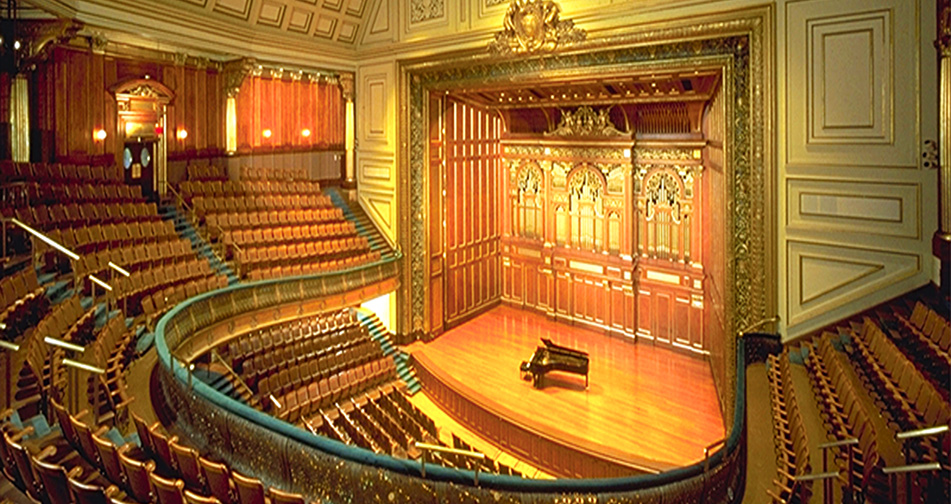Hidden snugly in the towering apartments and office buildings of Boston’s skyline sits an accomplished and renowned conservatory academy devoted to dance, music, and theater. A passerby could hardly differentiate the dorms of this school from nearby buildings, but upon closer inspection of the Victorian lamps and brass-handled doors, the oddity of this location becomes apparent. New England Conservatory sits as a relic in the midst of a city known for creating the new around the old.
Since the construction of the Conservatory in the mid-1800s, it has served as a training site for upcoming arts students, as well as housing some of the most experienced and professional teachers found globally. ENC’s Dr. Millican received his Master’s degree from the New England Conservatory. Alongside world-class teaching, the conservatory offers free performances, recitals, and master classes open to the public for attendance.
Known for its booming pipe organ and incredibly clean acoustics, Jordan Hall is located in the conservatory’s main building. Constructed 40 years after the conservatory itself, Jordan Hall ushered in a new site for music students and professors. Jordan Hall is constructed in a small space that can feel cramped until the music begins. Notes carry as if the ceiling does not even exist, and the atmosphere entices this uncanny ability of musical immersion: carven cherubs adorn the pipe organ’s frame, the seats are vestiges of the late 19th century, and the balcony railings swirl in intricate designs.
I had the privilege to attend a master class taught by world-renowned soprano Barbara Bonney inside this Hall, and the experience is something that will not soon leave the crevice of my heart. At the master class, four soprano students at the conservatory sang pieces from their repertoire. When the piece ended, Bonney corrected what techniques needed righting and made each singer repeat their song following her exact instruction. Bonney impressed the audiences with a near-deafening F note that was sweet and simple. Hardly touching the note, the students attempted to mirror her technique and successfully carry out a similar projection. Many of those in attendance were not students; most attended out of curiosity or simply to hear Bonney.
Directly downstairs lays Brown Hall, which is another small recital venue. I had the privilege to attend a senior music student’s cello recital, and the mastery and magic just as touching downstairs as they are up. Brown offers a flat-floor space for a simpler sort of venue, something more intimate. Vestiges of the past remain in intricately carved balconies and ornate chandeliers that still grace this modernized recital hall. The acoustics still dazzle the senses even in a smaller, modern hall.
While ENC students can find a variety of on-campus concerts, this conservatory offers an astounding new musical experience to those passionate about the arts. The conservatory is conveniently close; just hop on the orange line, get off on Mass. Ave, bang a left, find and walk up St. Botolph Street, then hook a right onto Gainsborough Street, where, tucked in among the glamor of the new, the New England Conservatory awaits.


